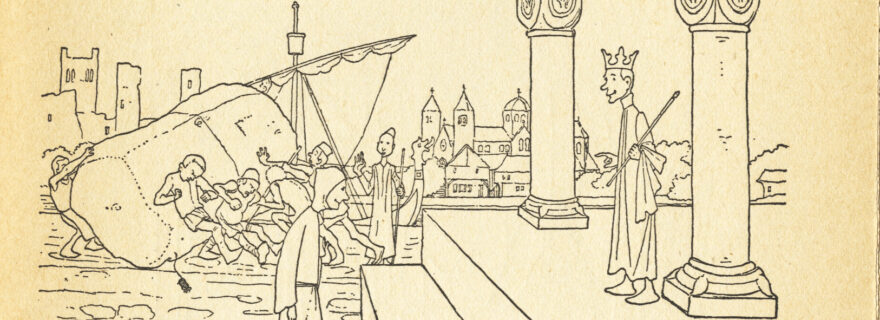Wanted! Original drawings by Johan Huizinga
Are you the unwitting owner of an original drawing by Johan Huizinga? It could be part of the first ever exhibition of his visual works in the University Museum of Groningen from 1 February until 1 May 2025. Will you help us find Huizinga's lost drawings?
February 1, 2025 will mark eighty years since Johan Huizinga’s death. His works remain available in numerous languages, in reprints or new translations. On that day, however, he also gets something he much deserved for a long time but never got: an exhibition of his most important drawings. The exhibition will be on display in the University Museum in Groningen, the city where he was born, studied and worked as a professor of history for ten years.
As a little boy, he stood out in his family as a talented drawer. At school, his teachers and classmates noted the humour in his drawings. They could be scribbles, caricatures or detailed sketches: I remember a fantasy drawing of a harbour in a Hanseatic city, which I probably made as a fourteen-year-old boy. Almost all of it has been lost, or at least not yet found. His talent initially seemed so great that he took drawing lessons at the Groningen Drawing Academy Minerva on Saturday afternoons to hone his skills. Who knows, maybe he was so talented that he had a future as an artist? Let us say that his gifts in other areas were more numerous and promising, which made him decide against a career in visual arts. When other people later asked him about the prospects of such a profession, he usually strongly advised against it.
We know from the diaries his grandfather kept how Johan developed his many talents. Grandfather, who was a Mennonite minister, even ordered drawings of remarkable events in the history of the Mennonites in the Netherlands for a fee. How grateful we would be when these drawings could be traced! Or what about a quartet game made by the young Huizinga himself!? Huizinga's own descendants inherited many of his drawings. But grandfather had six children and his drawings may also have been cherished and preserved in other branches of the family.
At grammar school, ‘Han’ Huizinga could not resist making all kinds of scribbles and doodles, of which only a single example has been handed down. This can be seen in the exhibition. His fellow students were thrilled to receive his blotters and delighted with his portraits of their teachers. His teachers usually let him go about his business when drawing, because he was otherwise the smartest boy in class and never caused any trouble.
A Selection of Memorable Scenes
Johan Huizinga's first major achievement as a draftsman, at the age of approximately 18, was given a place in the collections of Rijksmuseum in Amsterdam. Under the title: Selection of Memorable Scenes from Dutch history, he made eighteen illustrations, which can be seen on the Rijksmuseum website. Only experts know that there are also preliminary studies for these detailed scenes. There is one at the top of this text, but the original has not been found. Below is another preliminary study, somewhat hesitant and clumsy, which has also not been found:
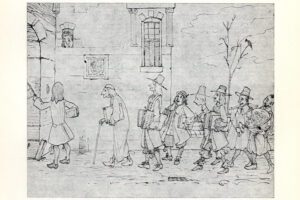

What's up with that? In the years after Huizinga's death, several publications about his work appeared, including reproductions of his drawings. The top example comes from an article by a childhood friend, Dirk Schoute, ‘Uit Huizinga’s jeugdjaren’ [From Huizinga's Youth], published in De Gids. The second example comes from the first, serious description of Huizinga's life and work: H.A. Enno van Gelder, Prof. Dr J. Huizinga, Gedachten en beelden uit zijn werk [Prof.dr. J. Huizinga, Thoughts and Images from his work] with 23 images. Do not think, dear reader, that these honourable gentlemen have not returned the drawings loaned for reproduction! They did bring them back – of course they did. So, where did they go? A few of them were found with Huizinga's grandchildren. One drawing was given away by Huizinga's widow to a dear friend and was found by chance. This is the main reason for my appeal: if she or others did this more often, more drawings may be ‘floating’ in circles of family members, friends, acquaintances or their descendants. The vast majority are still missing. Here are some examples. From Dirk Schoute:
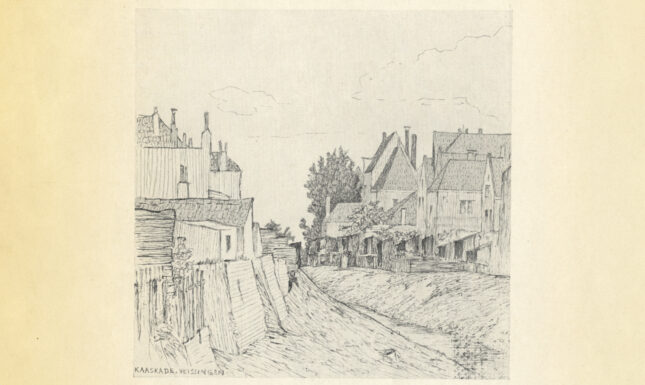

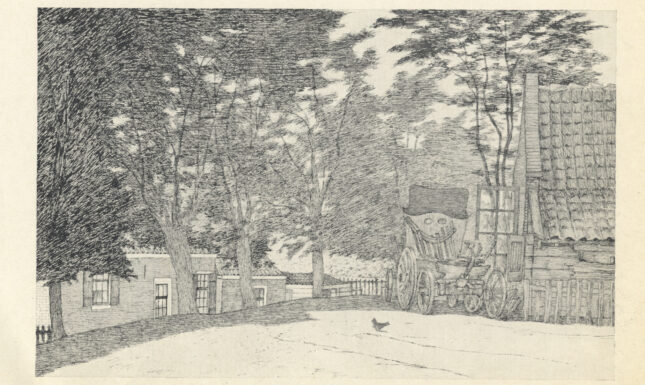

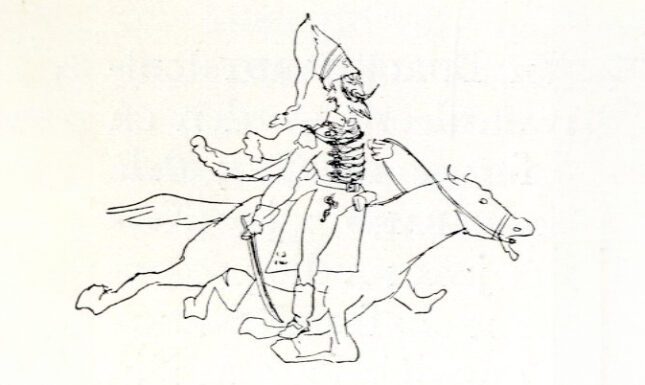

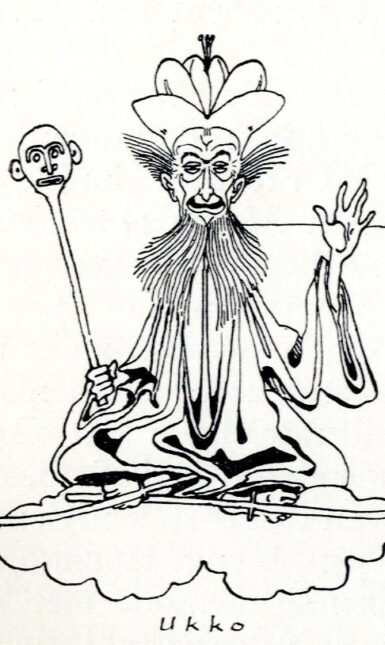

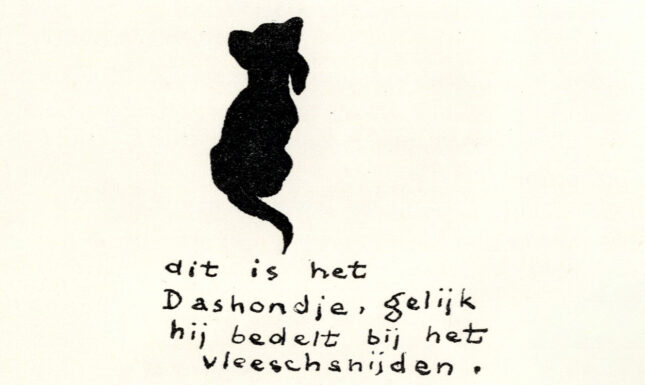

Subtle Landscapes
Another special case are Huizinga's ‘vignettes’, the subtle landscape drawings that he made in the Groningen countryside around 1900. Some in the wild, others based on examples from works of art in the possession of the then Museum of Antiquities in Groningen. They appeared in a book of stories published in Groningen dialect by childhood friend Anne S. de Blécourt, Fivelgoër landleven (Groningen, 1901). Unfortunately, to date, the original drawings were never found. The drawing on the cover came from Huizinga's imagination because a church with such a large tower and wonderfully small nave cannot be found in all of Groningen.


The drawings all have an idyllic character, such as the view below in Holwierde, north of Appingedam, which suffered greatly from war actions in World War Two in April-May 1945. The monumental farm is gone. But who knows, we might find the drawing again?
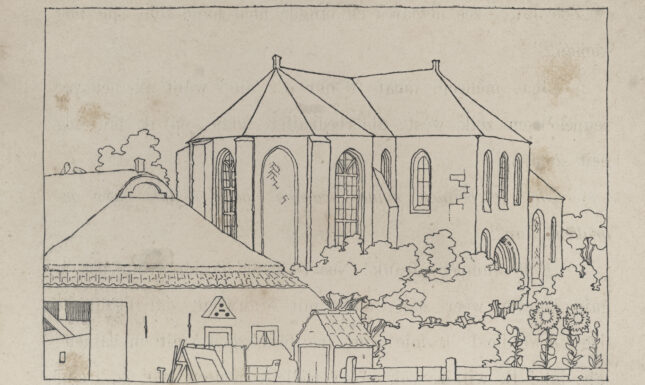

A portrait of Jean Philippe Vogel, professor of Sanskrit in Leiden, dates from much later. The current professor Peter Bisschop has managed to decipher all the meanings in Vogel Huizinga Drawings. The drawing has been preserved in print, but who is the owner of the original? Could it be found in the archives of the Kern Institute in Leiden or is it framed on the wall somewhere?
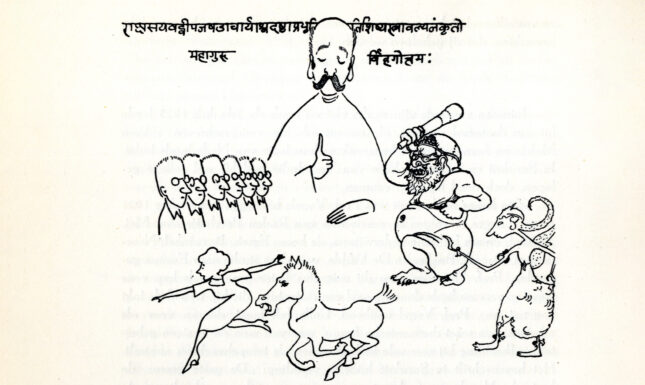

Abeltje, Timótheus and Zoë
The most difficult are drawings that are known from literature or from letters, but of which no image is known. Among Huizinga connoisseurs, the most important example is a small portrait of Huizinga that Jan Toorop made of him. Huizinga himself mentioned it in his Mijn weg tot de historie (My Path to History), at least in the unpublished, first version. He was then eighteen and always had a fresh and ruddy face. The back reportedly says: ‘Abeltje’, a one-off occasional name for which no one has yet been able to provide an explanation. Anyone who finds that drawing can expect that experts at ‘Tussen kunst en kitsch’ or ‘Antiques Roadshow’ will estimate its value at several thousand euros, such is the interest in the early Toorop (and Huizinga, of course).
Huizinga himself said that he learned to read from, among other things, an A.B.C. book for ‘sweet children’, unfortunately without mentioning the exact title. All the children in the book are sweet, except Timothy. The rhyme with his name is: ‘This is Timótheus, naughty and slow, he wanted the moon, that's what he's crying about now.’ This booklet has not yet been found. You don't want to know how many A.B.C. books for ‘sweet children’ were published in the Netherlands in the nineteenth century. Huizinga had not made this up because the letter Z referred to Zoë. He remembered that because he wasn't allowed to say Zoe. Huizinga even made a drawing of Timótheus, which he sent to his older brother Jakob. Does this sound vaguely familiar to anyone?
A first at the upcoming exhibition in the University Museum are four Groningen promotional plates, drawn by Huizinga. Only one of these plates was known through Huizinga's childhood friend Chris van Valkenburg. In his book about Huizinga, he mentioned on page 11: ‘he made promotional plates for some friends’. If only Van Valkenburg had mentioned who his friends were! Because now, their whereabouts are unknown. Jakob Huizinga got the plate for the aforementioned A.S. de Blécourt and was happy with it. The plate was only discovered when the name Blécourt was mentioned because the Groningen plates are usually accessible in the University Museum and elsewhere in the name of the PhD candidate. The print turned out to have been drawn by Huizinga, on the one hand because of his style and on the other hand because he signed the print with: H.H. [= Han Huizinga]. Subsequently, J.H. Feith and L. Roeters van Lennep were among the lucky ones. But who tells us that there aren't more Huizinga records to be discovered? Everyone, keep paying attention!
Architecture enthusiast
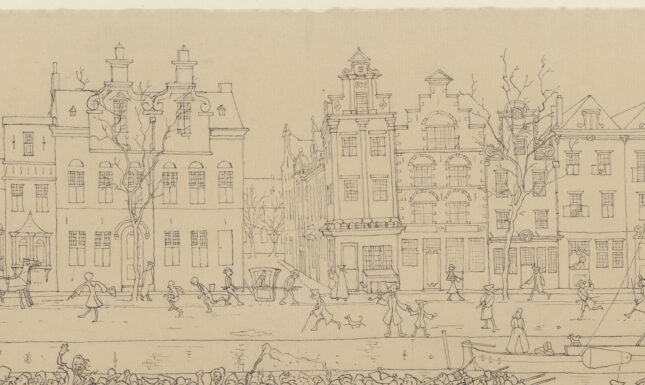

Did Huizinga copy these facades after existing houses, or are they fantasy drawings? ‘The old houses spoke first,’ he once wrote about his historical interest. The same question applies to the following small drawing, which has been found, but are the buildings recognizable? They seem too specific to me to be made up.
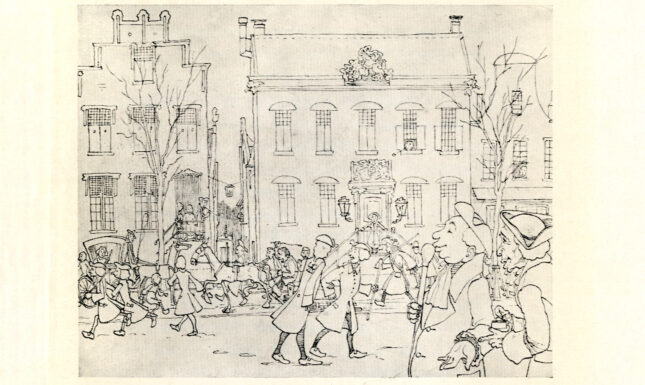

Groningen or Zeeland?
Huizinga found the woman who would become his wife in Zeeland. Her name was Mary Vincentia Schorer, she was intelligent and musical, beautiful, sociable and sweet. Her father was mayor of Middelburg, where the family lived in a large house on the Balans and owned a country estate in Toornvliet in Koudekerke, a neighbouring municipality. They spent wonderful holidays there during which Huizinga captured all kinds of places, especially on Walcheren. But the drawings often have no caption. These two drawings have been found, but where is it? In Groningen or Zeeland?
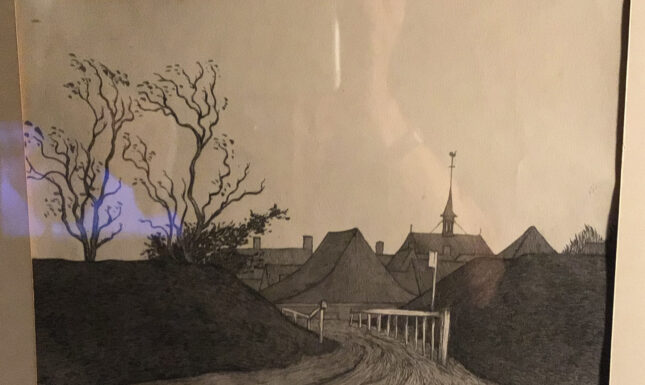

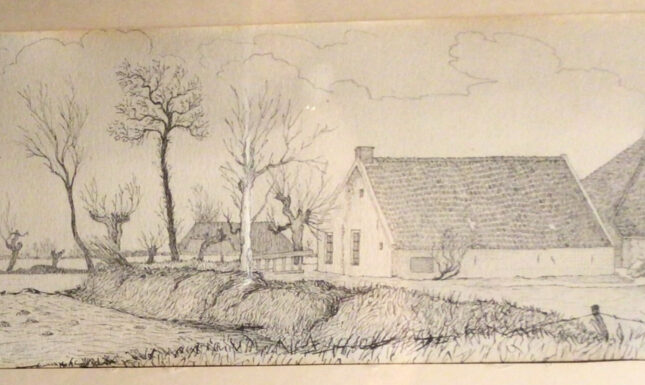

The following drawings have been photographed, but it is currently unknown where the originals are located.
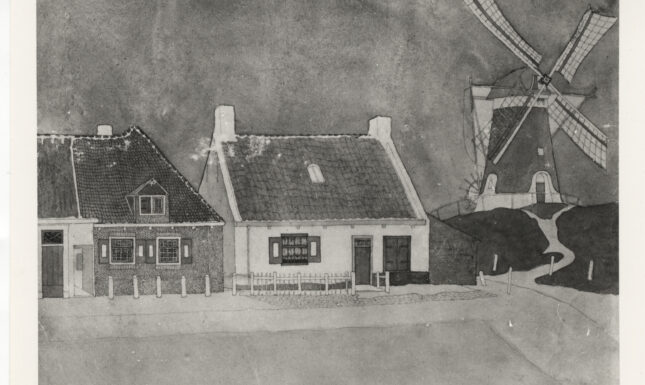

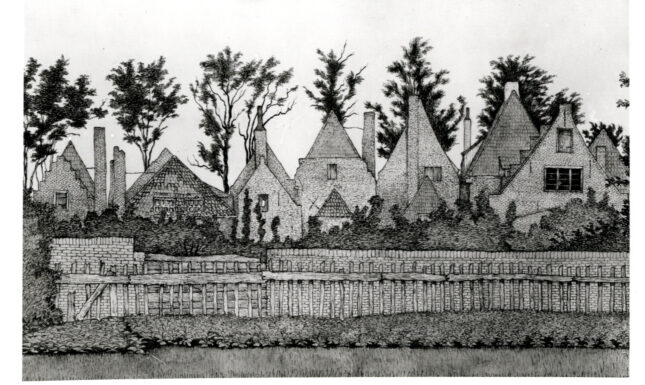

Unknown drawings may exist not only in the large Dutch collections (museums, universities, libraries and archives), but also in smaller or other institutions and especially in private collections and antiquarian bookstores. Or perhaps you are familiar with the drawings, but it is only now dawning on you that Huizinga may have been the draftsman. In that case, we kindly ask you to contact me, Anton van der Lem (g.a.c.van.der.lem@library.leidenuniv.nl), or the libraries in Groningen, Leiden or Middelburg. This text is proof of our good cooperation.


